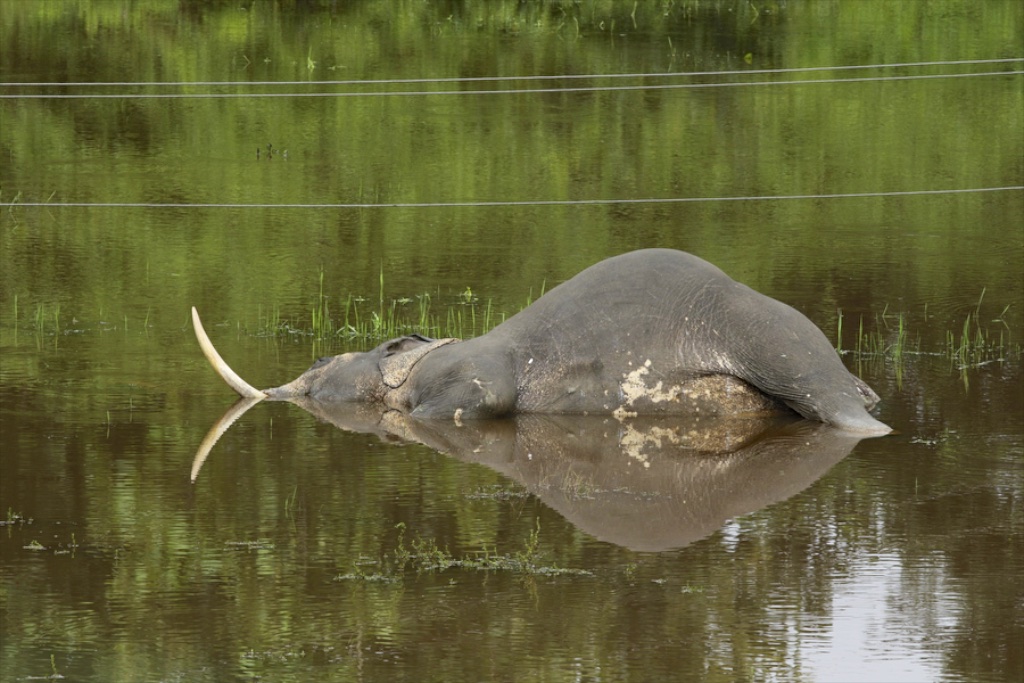 "
"
On September 4th 2015, a bull elephant that was part of a larger herd was electrocuted when it walked into a live, low-hanging power cable at the Kaziranga National Park in Assam. The herd was trying to reach higher ground in order to escape from floods that had inundated over 80% of the park.
Wildlife photographer Sandesh Kadur, who was in Kaziranga at the time, recounted details of the accident. Years of waterlogging had eroded the base of the electric poles, causing them to lean at an angle, which in turn made the power cable sag; it hung just over 5 feet above the ground. Unaware, the hapless tusker walked straight into this death trap at night, and was killed.
Death of wildlife due to electrocution is not a new problem and neither is it restricted to a specific area or species of wildlife. In recent years, cases of electrocution have been reported from Orissa, West Bengal, Gujarat, Karnataka and Tamil Nadu, all affecting an array of species. Not all cases of death by electrocution are accidents. Farmers illegally draw power from overhanging cables to create electric fences around their crops thereby killing elephants and other animals that walk into them. There are also horrific cases of line tapping by poachers where wildlife has been deliberately electrocuted by drawing power from bare transmission cables that run through our PAs. The sad truth is that this nation-wide problem is a result of negligence from state power authorities and can be completely avoided if they adhered to statutory norms.
Guidelines issued by various authorities stipulate safety measures such as ensuring that power cables are 20 feet above the ground, and by insulating or burying power lines. There are cases where such measures have been prudently installed in natural areas so as to protect pachyderms and other wildlife.
The upside of this particular unfortunate incident at Kaziranga is that the state electricity board finally decided to meet the demands of the Forest Department, and the sagging wires were replaced by underground cabling.

 CI is a non-profit, non-commercial portal that aims to facilitate wildlife and nature conservation by providing reliable information and the tools needed to campaign effectively.
CI is a non-profit, non-commercial portal that aims to facilitate wildlife and nature conservation by providing reliable information and the tools needed to campaign effectively.



Chosen as 'Picture of the Week'
While illegal activities like hunting and other forms of wildlife crime continue to threaten our wildlife, deaths by electrocution from power lines is also becoming increasingly commonplace.